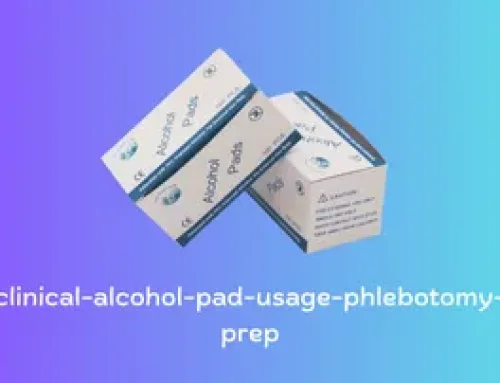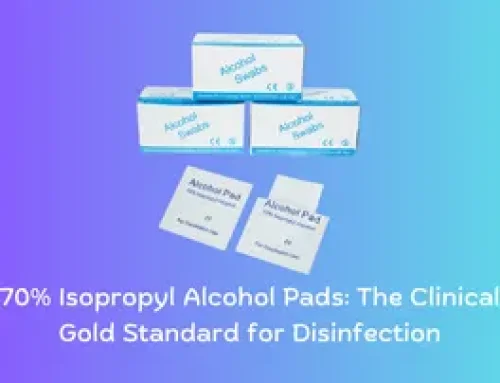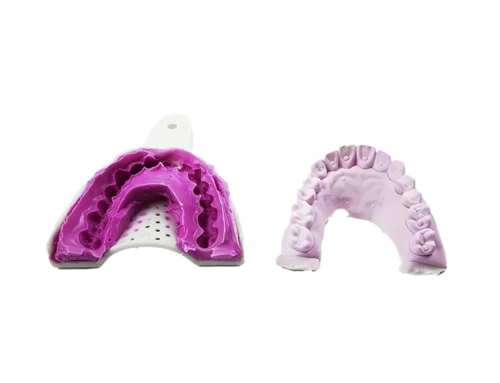Alcohol pads, also known as alcohol swabs, are small pieces of non-woven fabric or cotton that are saturated with alcohol. They are widely used in medical settings, as well as for personal hygiene purposes. Alcohol pads are used to clean and sterilize the skin before injections, to clean wounds, and to disinfect medical equipment. In this article, we will explore what alcohol pads are, how they work, and their benefits and side effects.
Composition of alcohol pads
Alcohol pads contain a solution of alcohol and other components that help to enhance their efficacy. The alcohol used in alcohol pads can be isopropyl alcohol or ethanol. Isopropyl alcohol is the most common type of alcohol used in alcohol pads, as it is more effective at killing bacteria and viruses. Ethanol is also effective, but it is less commonly used in alcohol pads due to its flammability.
In addition to alcohol, alcohol pads may contain other components such as purified water, glycerin, and hydrogen peroxide. These components help to increase the effectiveness of alcohol pads by enhancing the penetration of alcohol into the skin or wound.
How to use alcohol pads?
Alcohol pads are used in a variety of settings to clean and sterilize the skin or medical equipment. Here are some common uses of alcohol pads:
A. Preparing the skin for injection
Before giving an injection, it is important to clean the skin to reduce the risk of infection. Alcohol pads are commonly used to clean the injection site. To use an alcohol pad for this purpose, simply remove the pad from its packaging and rub it over the injection site in a circular motion. Allow the skin to dry completely before administering the injection.
B. Cleaning wounds
Alcohol pads can be used to clean small wounds, such as cuts or scrapes. To use an alcohol pad for this purpose, gently wipe the wound with the pad. Be sure to discard the used pad and use a new one for each wipe.
C. Sterilizing medical equipment
Alcohol pads can also be used to sterilize medical equipment, such as thermometers or blood glucose meters. To use an alcohol pad for this purpose, wipe the equipment with the pad and allow it to dry completely before use.
Benefits of using alcohol pads
Alcohol pads offer several benefits over other methods of cleaning and sterilizing the skin or medical equipment. Here are some of the key benefits of using alcohol pads:
A. Reducing the risk of infection
One of the main benefits of using alcohol pads is that they can reduce the risk of infection. Alcohol is a powerful disinfectant that can kill a wide range of bacteria and viruses on the skin or medical equipment. By using alcohol pads, you can help prevent the spread of infection and keep yourself and others safe.
B. Convenience and portability
Alcohol pads are small and portable, making them easy to carry in your purse, pocket, or first aid kit. This makes them a convenient option for cleaning and disinfecting on-the-go, whether you’re at home, work, or traveling.
C. Cost-effectiveness
Alcohol pads are also a cost-effective option for cleaning and sterilizing. They are relatively inexpensive and come in large quantities, making them a great option for individuals or organizations that need to clean and sterilize frequently.
Side effects of using alcohol pads
While alcohol pads are generally safe to use, they can cause some side effects in certain individuals. Here are some of the most common side effects of using alcohol pads:
A. Allergic reactions
Some people may be allergic to alcohol or other components in alcohol pads. This can cause symptoms such as itching, redness, and swelling. If you experience any of these symptoms after using an alcohol pad, stop using it immediately and seek medical attention if necessary.
B. Skin irritation
Alcohol can be harsh on the skin, particularly if it is used excessively or on sensitive areas. This can cause dryness, peeling, or other forms of irritation. To minimize the risk of skin irritation, be sure to use alcohol pads only as directed and avoid excessive use.
Alternatives to alcohol pads
While alcohol pads are a popular and effective option for cleaning and sterilizing, there are also some alternatives you can consider. Here are a few options:
A. Soap and water
Soap and water is a simple and effective way to clean the skin or wounds. Simply wash the affected area with soap and water and rinse thoroughly. This can help remove dirt and bacteria and reduce the risk of infection.
B. Chlorhexidine gluconate
Chlorhexidine gluconate is a chemical antiseptic that is commonly used in medical settings. It is effective against a wide range of bacteria and viruses and is less harsh on the skin than alcohol. Chlorhexidine gluconate is available in a variety of forms, including wipes, sprays, and solutions.
FAQs
Are alcohol pads safe to use on all types of skin? Yes, alcohol pads are generally safe to use on all types of skin. However, if you have sensitive skin, you may want to test the pad on a small area before using it more broadly.
Can alcohol pads be used to disinfect surfaces? Yes, alcohol pads can be used to disinfect surfaces. Simply wipe the surface with the pad and allow it to dry completely.
How long does the alcohol in an alcohol pad remain effective? The alcohol in an alcohol pad evaporates quickly, so it is most effective when used immediately after opening the packaging.
Can alcohol pads be reused? No, alcohol pads should be used once and then discarded.
Are there any special precautions I should take when using alcohol pads? Be sure to follow the instructions on the packaging and use the pads only as directed. Avoid excessive use, as this can cause skin irritation.
Keep them away from heat and flames: Alcohol pads are flammable, so you should keep them away from sources of heat and flames, such as stoves, candles, and lighters.
Use them in a well-ventilated area: When using alcohol pads, make sure you are in a well-ventilated area. The fumes from the alcohol can be harmful if inhaled in large quantities.
Don’t use them near your eyes: Alcohol pads are intended for external use only. Avoid using them near your eyes or other sensitive areas.
Use them on clean skin: Make sure the area you are cleaning with the alcohol pad is clean and free of dirt and debris.
Don’t use them on open wounds: Alcohol pads can be painful when used on open wounds. Avoid using them on cuts, scrapes, or other open wounds.
Dispose of them properly: After using an alcohol pad, dispose of it in a proper waste container. Do not flush it down the toilet or throw it in the trash.
By following these precautions, you can safely use alcohol pads to clean and disinfect your skin.
Glossary
Here are some key terms related to the topic of alcohol pads:
Antiseptic – A substance that kills or inhibits the growth of microorganisms, particularly bacteria.
Disinfectant – A substance that kills or eliminates microorganisms, particularly bacteria and viruses.
Portability – The quality of being easily carried or transported, particularly in the context of small or lightweight objects.
Sterilization – The process of eliminating or destroying all forms of microbial life, particularly bacteria and viruses.
Conclusion
In conclusion, alcohol pads are a convenient, portable, and cost-effective method to clean and disinfect the skin or medical equipment. They offer several advantages over other cleaning methods, but may cause some side effects in individuals with sensitive skin or allergies. It is important to use alcohol pads as directed and seek medical attention if any adverse reactions occur. Overall, alcohol pads are a simple and effective way to maintain hygiene and prevent the spread of infections.









